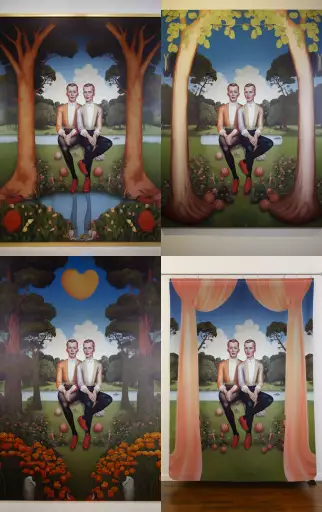Explore the Best AI Image Gallery

Bridging the Gap: How AI-Powered Visual Experiences Transform the Creative Industry
The creative landscape is undergoing a profound transformation fueled by the rise of artificial intelligence (AI). No longer confined to the realm of science fiction, AI is now weaving its magic into visual experiences, empowering artists, designers, and innovators with unprecedented tools and possibilities. From generating stunning artwork to crafting immersive virtual worlds, AI-powered visual experiences are bridging the gap between imagination and reality, reshaping the very essence of creative expression.
Unleashing Creative Potential: Applications Across Industries
The impact of AI on visual experiences is pervasive, touching upon diverse sectors:
- Art & Design: AI algorithms can generate original artwork in various styles, assist designers in creating unique patterns and textures, and personalize artistic creations based on user preferences.
- Advertising & Marketing: AI-powered tools can create dynamic and personalized advertisements, generate captivating visuals for social media campaigns, and analyze consumer responses to optimize marketing strategies.
- Entertainment & Gaming: AI can develop realistic characters, environments, and narratives for video games, enhance cinematic special effects, and personalize user experiences in virtual worlds.
- Education & Training: AI-driven simulations and interactive visualizations can create immersive learning environments, cater to individual learning styles, and provide real-time feedback on student progress.
Navigating Ethical Considerations
While AI offers immense potential, it also raises ethical considerations that require careful attention:
- Copyright & Ownership: The question of authorship and intellectual property rights arises when AI generates creative content. Establishing clear guidelines for ownership and attribution is crucial.
- Bias & Fairness: AI algorithms can perpetuate existing biases present in the training data, leading to unfair or discriminatory outcomes. Mitigating bias through diverse datasets and algorithmic transparency is essential.
- Privacy & Security: The use of AI-powered visual experiences often involves collecting and processing user data. Ensuring data privacy, security, and responsible data governance is paramount.
Shaping the Future: Trends in AI-Driven Visual Experiences
The field of AI-driven visual experiences is rapidly evolving, with several emerging trends shaping its future:
- Increased Personalization: AI will enable highly personalized visual experiences tailored to individual preferences, needs, and contexts.
- Immersive & Interactive Experiences: AI-powered virtual and augmented reality applications will create immersive and interactive environments that blur the lines between the physical and digital worlds.
- Human-AI Collaboration: AI will act as a powerful tool to augment human creativity, fostering collaboration between humans and machines in the creative process.
- Explainable AI: Efforts to make AI algorithms more transparent and understandable will increase trust and enable better control over their outputs.
Conclusion
AI-driven visual experiences are revolutionizing the creative industry, unlocking new possibilities for artistic expression, innovation, and human interaction. By embracing these transformative technologies while addressing ethical considerations, we can pave the way for a future where creativity knows no bounds.




](https://images.ai-img.art/thumbnails/150/f67d9af3398150f2ab1bcf250717fea134275e2ca896252b54a4d9bb3719f9ac.webp)



](https://images.ai-img.art/thumbnails/150/f9584153b4cddd8c9fab611dc10247549b275c59bc173251e37d0935874f9deb.webp)






















](https://images.ai-img.art/thumbnails/150/c2c9c48b38fae37f0a457b80b084ed01ba803810fc8f488c8f610c03abc74049.webp)

](https://images.ai-img.art/thumbnails/150/4289d1230b86a96c4d556636c3167bed0ef38f850826549517e4e45db4d87bf7.webp)

](https://images.ai-img.art/thumbnails/150/008b5d5d49667cc2e93a5f8a8adfaa545963da99c39ff0901f5296294636400d.webp)


](https://images.ai-img.art/thumbnails/150/bddf3ae4a232290858389b933c866ad3be429ef2e25c23a9f4d7713ed6e44d0b.webp)


